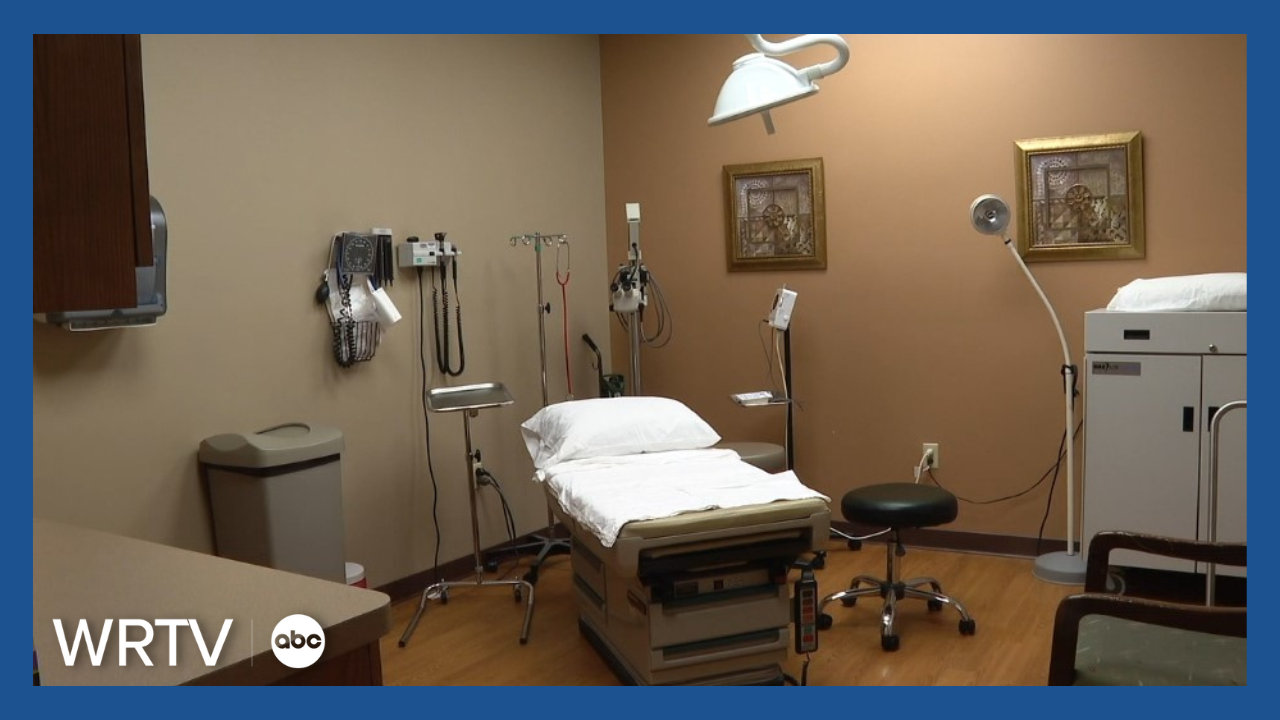INDIANAPOLIS— In an afternoon lab, Taylor Hiland is helping fellow medical students. He’s in his fourth and final year of medical school at Marian University and wants to practice family medicine.
“I did a master’s here at Marian prior to medical school, and during that master’s, I got a little bit of exposure to primary care, understanding the fields and paths that medical students can take,” Hiland said. “That’s when I started thinking family medicine might be it for me.”
He knows primary care is not the most popular pick among medical students.
“It went out of style at some point,” Hiland said. “I think one of the big things is compensation. People just started shying away from it because they thought, ‘I can do this and make more money,’ but I think at the end of the day, it comes down to what you’re passionate about.”

Amanda Wright is dean of Marian University’s Tom and Julie Wood College of Osteopathic Medicine and a primary care doctor.
“I’m a primary care physician, and I would never choose to do anything else,” Wright said. “It is the best thing, outside of being in a medical school. I think it’s the best job you could possibly have because you’re really integrated into the lives of your patients and you see them through wellness concerns, lumps and bumps, acute issues, chronic issues. You can see them in-patient, out-patient. You can do all of the things for your patients, so it’s a beautiful field to go into.”
There is a massive need for primary care physicians — not just in Indiana, but across the country.
According to the Association of American Medical Colleges, in the next 11 years, there will be a shortage of between 20,000 and 40,000 primary care physicians nationwide.
In Indiana, the shortage is expected to be between 800 and 1,000 by 2030.

“We’re already feeling those constraints now,” Wright said. “I think it’s a real issue for us here in Indianapolis, but then, the more rural we get, it gets even worse.”
According to Gov. Mike Braun, at least 12 rural hospitals could close due to Medicaid budget cuts in President Donald Trump’s “big, beautiful bill.” Braun says that could be just the tip of the iceberg.
“Because so many clinics and doctors have been fed up with the system, they’ve had to sell to them,” Braun said. “My goal is to take Indiana into a place where we address, yes, in fact, we’ve got 80 to 90 rural hospitals hanging on by their fingernails.”
That’s part of the reason schools like Marian are exploring ways to expand. The School of Osteopathic Medicine currently has 150 students, but it can take up to 162.

“First, the class we already have is looking at how do we expand the exposure to rural pathways, rural rotations, and rural residencies, so the students we have already — how do we get them into rural and primary care spaces?” Wright said.
Nearly one-third of Indiana residents live in rural areas designated as medically underserved.
“There really are those disparities between populations that have access to primary care physicians and populations that do not,” Wright said. “I think it really is an issue, and we think every Hoosier, whether they’re in Indianapolis or across one of the 92 counties, they deserve really great care. So we take that as our mission to make sure we train people to go out into those communities so that at least we can do our part with those health care disparities.”
Students like Hiland have been exposed to rotations focused on rural medicine. He hopes to match into a residency in the Indianapolis area.
“I think my generation is becoming more passionate about that continuity of care we’re able to provide to patients,” Hiland said. “I mean I do get excited thinking I can be a small part of a solution for the shortage of physicians in the area. I think a lot of it comes back to remembering what we go into the field for.”





